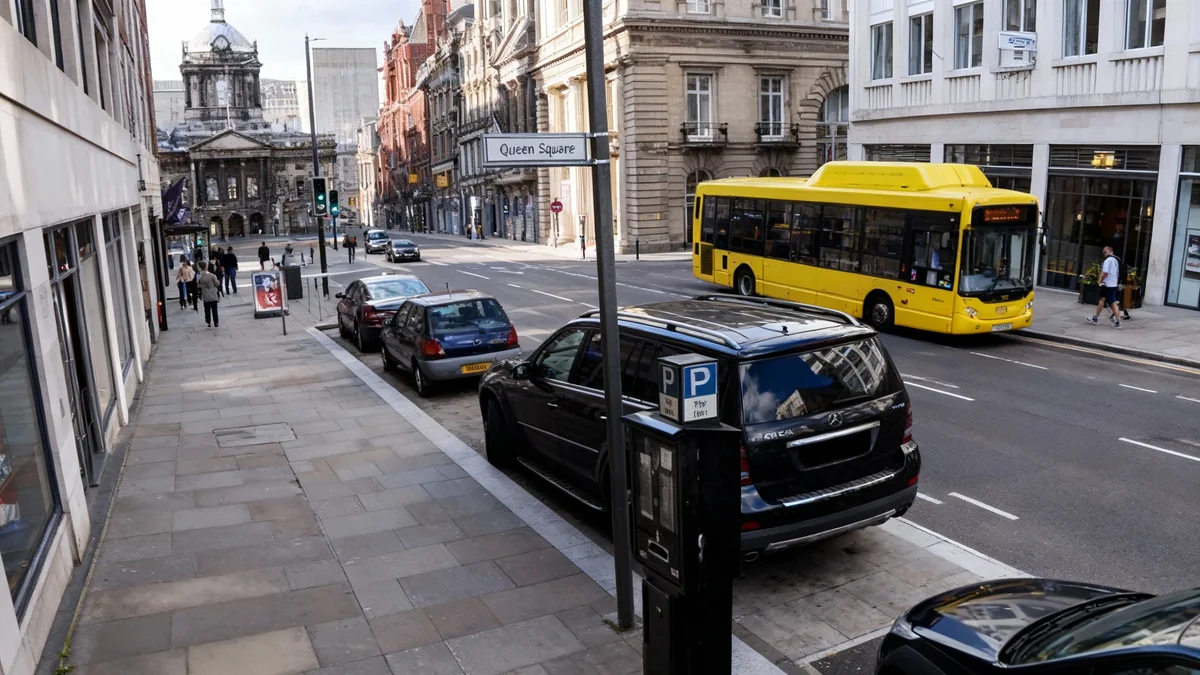Leaders in the Liverpool City Region have affirmed their commitment to a major 10-year regeneration plan for North Liverpool, despite the project not being selected for the UK government's New Town initiative. The ambitious vision aims to deliver significant housing growth and economic investment across a 5km stretch of the city.
Key Takeaways
- Local authorities will proceed with the 'North Liverpool' regeneration plan without central government's New Town designation.
- The 10-year vision focuses on housing, economic growth, and redeveloping brownfield sites.
- The project area spans from Sefton to Liverpool city centre, including Everton, Anfield, and Kirkdale.
- Mayor Steve Rotheram expressed frustration but highlighted that local regeneration is already underway.
- Sefton Council Leader Marion Atkinson stated the rejection is "the start, not the end" of their efforts.
Ambitious Vision for North Liverpool
Liverpool City Council, Sefton Council, and the Liverpool City Region Combined Authority are collaborating on a transformative plan for a key area of the city. The project, referred to as 'North Liverpool', is designed to revitalise a 5km corridor situated between Sefton and Liverpool's city centre.
The development plan encompasses several distinct neighbourhoods, including Everton, Anfield, Kirkdale, and the area around Greatie Market. It also incorporates the ongoing Bootle New Strand development project, aiming to create a cohesive strategy for the entire region.
Core objectives of the 10-year vision include accelerating the delivery of new housing, stimulating sustainable economic growth, and repurposing unused brownfield sites for productive use. This strategy is intended to create new opportunities and improve living standards for residents in the north of the city.
Project Scope
The 'North Liverpool' regeneration area is a significant urban zone covering multiple postcodes. The plan aims to connect ongoing projects, such as the new stadium at Bramley-Moore Dock, with broader community and housing developments to maximise impact.
Setback from National Initiative
The local authorities had formally submitted their proposal to be included in Westminster's New Town initiative. This government-led programme is designed to support and fund large-scale development projects across the country. However, the North Liverpool plan was not selected to move forward as part of this scheme.
A New Town designation would have potentially unlocked significant central government funding and support, providing a clearer path for the project's delivery. The decision not to include the Liverpool proposal represents a considerable setback in securing this specific stream of national backing.
Despite this, local leaders have been quick to state that the vision for North Liverpool is not dependent on this single initiative and that they will pursue alternative routes to achieve their goals.
Local Leaders Remain Defiant and Determined
Following the announcement, regional leaders expressed their disappointment but stressed that the project's momentum would not be lost. They have pledged to find different ways to deliver the regeneration the area needs.
Mayor's Frustration and Resolve
Steve Rotheram, Mayor of the Liverpool City Region, voiced his strong feelings about the decision. He described the situation as "incredibly frustrating" and emphasised the project's national importance.
"This is one of the biggest regeneration opportunities in the country and today's decision is a missed chance for government to back communities," Mr. Rotheram stated.
He also pointed out that significant progress in the area has already been made without direct central government intervention in this specific scheme. "But regeneration here hasn't waited for Westminster; from Everton's new stadium at Bramley-Moore to the transformation of Bootle Strand," he added.
Ongoing Local Investment
The development of Everton F.C.'s new stadium at Bramley-Moore Dock is a cornerstone project in the North Liverpool area. Scheduled to open for the 2025-26 football season, the stadium is already acting as a catalyst for wider investment and infrastructure improvements along the city's northern waterfront.
Sefton Council's Forward-Looking Stance
Echoing the Mayor's determined tone, Councillor Marion Atkinson, the leader of Sefton Council, framed the government's decision as a new beginning rather than a conclusion. Speaking to BBC Radio Merseyside, she made it clear that the local commitment is unwavering.
"We were absolutely clear when we first started this project that we weren't going to let this go," she said. According to Cllr Atkinson, the rejection is "the start, not the end."
She outlined the next steps, confirming that the authorities will now explore other avenues. "We will still be working towards delivering the New Town - we will find different ways to do it and that will still mean working with government [and] working with Homes England," she explained.
The Path Forward for North Liverpool
With the New Town designation off the table for now, the combined authority and the two councils will need to recalibrate their strategy. This will likely involve a multi-faceted approach to funding and planning.
Potential strategies include:
- Seeking alternative government grants and funding streams.
- Engaging more deeply with private sector investors.
- Working with Homes England, the government's housing and regeneration agency, on a project-by-project basis.
- Phasing the development to align with available funding.
The unified front presented by local leaders suggests a strong political will to overcome the funding hurdle. Their public statements indicate that the underlying vision for a regenerated North Liverpool remains a top priority, and work will continue to turn that vision into a reality for the thousands of residents in the area.





